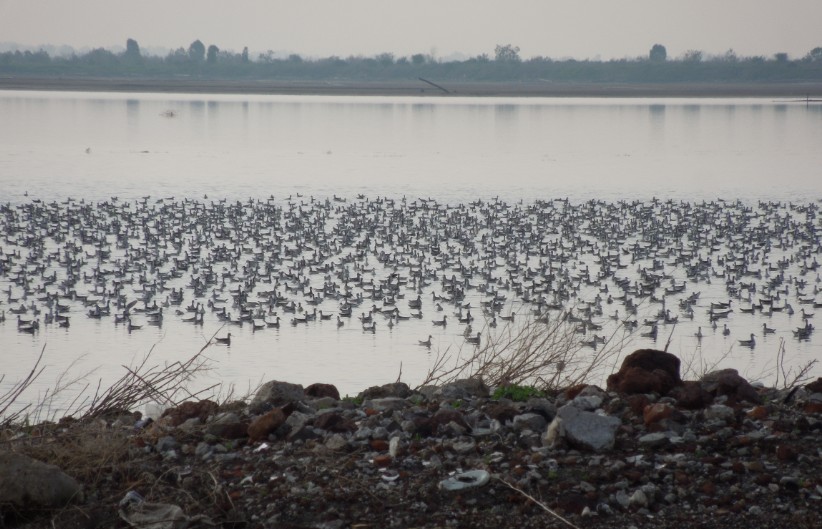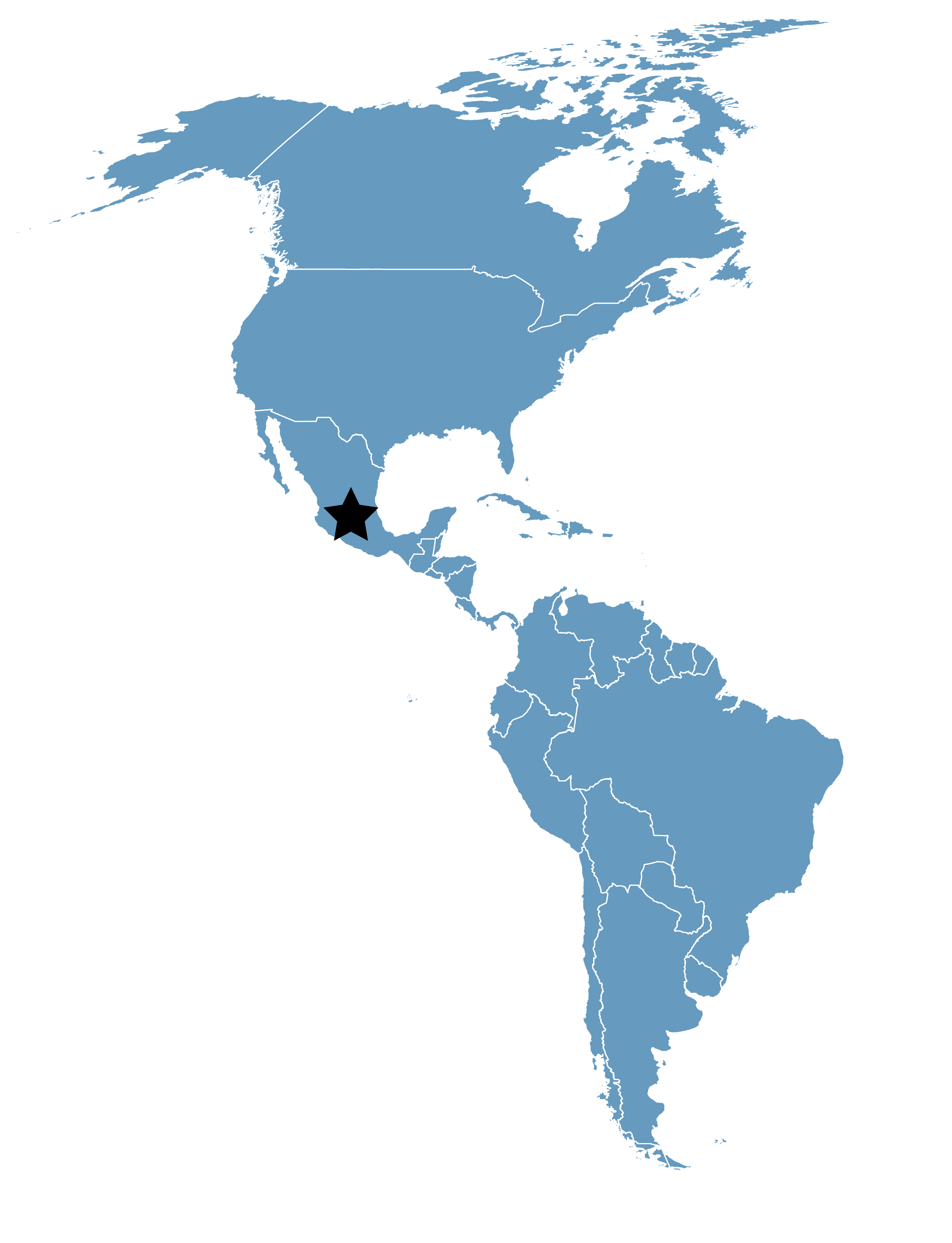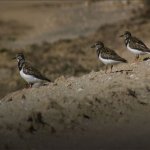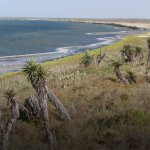Lago Texcoco
Location
Mexico State, Mexico
Category
Regional
Basis for Designation
Supports more than 20,000 shorebirds annually.
Size
10,000 hectares (24,710 acres)
Date Designated
September 2007
Site Owner
Federal Zone, administered and managed by the Lago de Texcoco Management of Mexico’s National Water Commission (CONAGUA)
Site Partners
Lago de Texcoco Management of Mexico’s National Water Commission (CONAGUA)
Ducks Unlimited de Mexico, A.C. (DUMAC)
Overview
Lago Texcoco is a 10,000-hectare federally managed wetland in Mexico State, almost immediately adjacent to the Mexico City airport, that can support more than 60,000 shorebirds annually—Wilson’s Phalarope (Phalaropus tricolor) most abundantly. This site is also recognized nationally as an Important Bird Conservation Area (AICA, by its Spanish acronym). Lago Texcoco is currently managed by the National Water Commission (CONAGUA), a branch of the Secretary of Environment and Natural Resources (SEMARNAT), as reservoirs and temporary ponds.
The area receives annually an average of 150,000 migratory birds that travel through the Central Migratory Flyway. To date, 182 bird species have been identified, among them 30 are shorebirds. The area is a key breeding, wintering, feeding, and resting ground for several species of shorebirds. In migration, the area holds record counts of up to 62,000 individuals of Wilson´s Phalarope (2011). The site also hosts significant numbers of Baird’s Sandpiper (> 5,000), Least Sandpiper (>7,000), and Western Sandpiper (>5000). Resident species include American Avocet, Black-necked Stilt, Killdeer, Spotted Sandpiper, and Snowy Plover. Two of the most important areas are Laguna El Caracol and Laguna Casa Colorada where each year more than 100 Snowy Plover nests occur.
Lago Texcoco is a 10,000-hectare federally managed wetland in Mexico State, almost immediately adjacent to the Mexico City airport, that can support more than 60,000 shorebirds annually.
During the 17th century, the Texcoco Lake was the most important water body in the Mexico Valley watershed; however it drained until its bed was exposed and consequently degraded to a point of desertification. Since 1971, an environmental improvement program resulted in the ecosystem restoration. This work and the scenic beauty of the place have attracted the attention of different sectors of society, which has been strengthened by an environmental education program directed to the general public.
As part of this program, CONAGUA celebrates the Texcoco Lake’s Wild Fauna Day, which has taken place the first Saturday of December since 1999. The event offers migratory bird watching tours through the reservoirs and environmental education and outreach activities.
Despite its current condition, ecological and social characteristics, and proximity to Mexico City, the wetlands of Texcoco Lake still are a key area for shorebirds and a number of other resident and migratory waterbirds.
The Texcoco Shorebirds Project currently monitors shorebirds and habitat of Lago Texcoco with a focus on Snowy Plover. Through monitoring and banding Snowy Plovers, researchers now know there is exchange between individuals among different populations. For example, in April 2010 they placed a band with the combination RX/GG (Red, metal ring/ green, green), on a female who successfully nested at Lago Texcoco and was seen 2 years later in Oklahoma, some 1,800 km away.
Shorebirds
Most of the shorebirds use the artificial reservoirs and temporary ponds as resting and feeding grounds. So far, 30 shorebird species have been recorded. The species that breed in the area are: Himantopus mexicanus, Recurvirostra americana, Charadrius vociferus, Actitis macularius, which use the shallow ponds. The H. mexicanus population nest on the grassland next to the ponds; R. americana prefers areas with scarce vegetation, and C. vociferus uses sandy and pebble beaches. Charadrius nivosus nests on dry soils where the difference in salt colors creates mimetic effects. Phalaropus tricolor is the most representative migratory bird species with annual numbers up to 62,000 individuals.

Wilson’s Phalarope (Phalaropus tricolor). Photo: Dr. Atahualpa DeSucre M.
Disturbances, Impacts, and Threats
Illegal hunting, wild dogs, and conversion in land use are among the main impacts and disturbances to shorebirds in the area. Encroachment, due to the surrounding population growth, is a constant threat to the site (past, present, and future). Therefore, CONAGUA Hydraulic Security keeps a 24-hour monitoring service in Texcoco Lake area.
Activities
Priority management measures for the site include a permanent hydraulic program, maintenance of restored areas, and wastewater treatment, as well as a monitoring program for the birds’ nesting zones.
There is also an environmental management program aimed at restoring the vegetation cover through the improvement of saline and sodium soils. Hydrological resource management sustains the wetland system through the construction of hydraulic infrastructure, river channeling to regulate pluvial run-offs, as well as wastewater discharge, and the operation of wastewater treatment plants to ensure enough water for the area.
A monthly monitoring program of both resident and migratory shorebirds and waterbirds is carried out by the Texcoco Lake Manager’s Office. Monitoring data have been used as indicators to assess the environmental condition and habitat restoration during the last years. The monitoring shows records of species that were not present few years ago.
Additionally, the Environmental Education and Outreach program raise awareness about the area among different sectors of society through several activities such as field trips, bird watching, research support, and outreach material distribution that provides information about the site. Outreach materials like the “Texcoco Lake” poster have been produced with the support of CONAGUA and DUMAC. The poster focuses on shorebirds diversity in the area and the importance of their conservation.
The return of wildlife to the area is a measure of the success of the ecological restoration process. Thanks to integral management work it has been possible to establish diverse environments such as grassland prairies, forests, and wetland areas (shallow ponds, deep water bodies, and bulrush areas), which have attracted a diversity of fauna, mainly birds.









